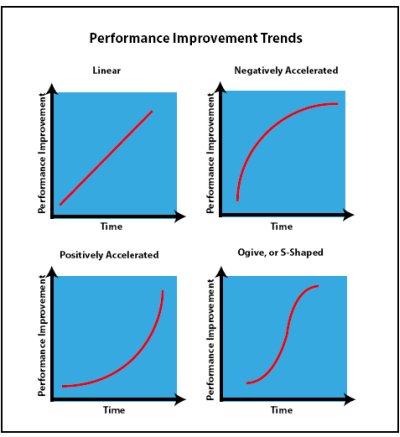articles/Business/train-imp-page2
Optimal Training To Improve Your Photography - part 2 of 1 2 3 4
by John Hellstrom Published 01/12/2016

The key challenge for photographers who want to improve their images is to avoid arrested development. Photographers gradually need to set new goals and higher performance standards; that improves technique, visualisation and communication with clients, leading to higher scores. Deliberate training increases the performance level compared with when photographers stop challenging themselves.
Performance vs. Learning, and Rate of Improvement Performance is the behavioural act of executing a skill at a specific time in a specific situation, such as photographing a bride during the procession. This is often visible and measurable directly.
Learning, on the other hand, is a change in the capability to perform a skill. It occurs as a result of experience or practice. It cannot be observed directly, as the processes leading to change of performance are internal with different elements of the technique learnt at different rates [10].
Investigations examining people learning refined motor skills [11,12], similar to that of learning to quickly use the buttons of a new camera, have shown that the rate of performance improvement is usually higher at the beginning and lower later on. This decrease in improvement is called a 'negatively accelerated function of practice', and is probably the most common feature when learning motor skills [13].
Given that a performance improvement slow-down may often occur in photography, a number of plausible explanations can be deduced. The first relates to a self-identified performance proficiency - the level of competition score the photographer is content with achieving.
Another, which is probably the more important to photographers, is that the rate of improvement seems related to what is 'left to improve.'
In simple terms, this means that early on in the photographer’s development there is much room for advancement in skills. As the photographer reaches a certain level or standard, there is less room to improve and any remaining improvement may then be flatter - requiring more purposeful, refined, and committed practice. This perceived slowdown in the learning process is termed the 'power law of practice' [14].
In general, there are four different trends to performance improvement: over a period of time in a linear way (improving proportionally over time); negatively accelerated (improving the most in the beginning, ie the 'law of practice'); [14] positively accelerated (improving more in the end); or S-shaped (ogive) improvement (improving most in the middle). Negative acceleration in learning is affected by the time required to advance skills.
A shorter time may result in a more linear progression, and a longer time in a curvilinear shape. It is important to recognise that these curves are hypothetically smoothed, with individual curves in real life likely to look more erratic. Photographers may experience any or all of these with different skills at any time.
Feedback
Feedback is critical during training to be able to adjust and improve.
There are two general types of feedback: task-intrinsic and augmented feedback.
With task-intrinsic feedback, you receive information from your senses.
You can see, hear and feel the movement. The feel can be divided into internal (proprioception) and tactile senses. Skilled photographers can, for example, feel the difference in the weight distribution of the camera body and lens, and how to orient the body and arms to decrease camera shake.
With augmented (or task-extrinsic) feedback, you receive information from an external source such as a coach or a video camera.
It adds information that you may not detect using your sensory system.
The augmented feedback may aid the learning process, and motivate to continue training individuals toward the decided goal. It can be provided during (concurrent) or after (terminal) the photography session. The feedback may be information such as where the photographer is placed in the room in relation to light and subjects, in order to optimise available light and to predict events when capturing photojournalistic images.
There are two types of augmented feedback: knowledge of performance (KP) and knowledge of results (KR). Knowledge of performance may describe how a person photographed or edited an image. Knowledge of results is information related to the photograph, such as the score it got in a competition.
Please Note:
There is more than one page for this Article.
You are currently on page 2
- Optimal Training To Improve Your Photography page 1
- Optimal Training To Improve Your Photography page 2
- Optimal Training To Improve Your Photography page 3
- Optimal Training To Improve Your Photography page 4
1st Published 01/12/2016
last update 09/12/2022 14:59:59
More Business Articles
There are 37 days to get ready for The Society of Photographers Convention and Trade Show at The Novotel London West, Hammersmith ...
which starts on Wednesday 14th January 2026





